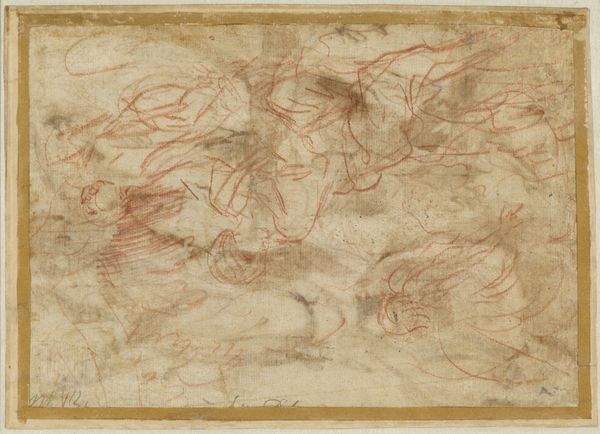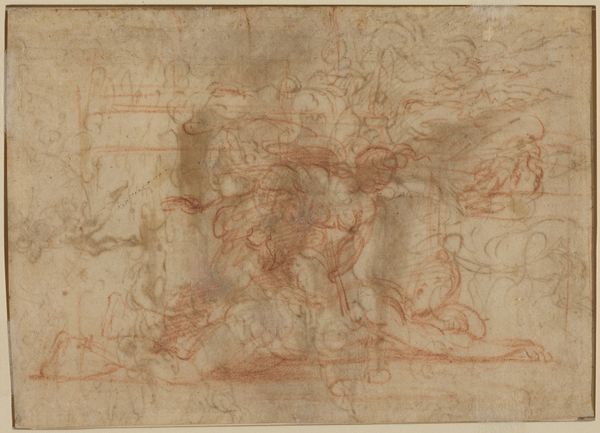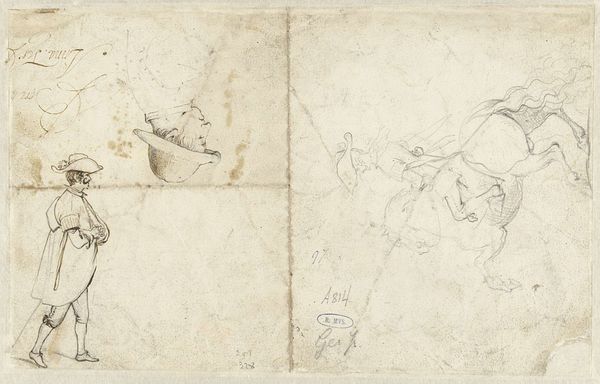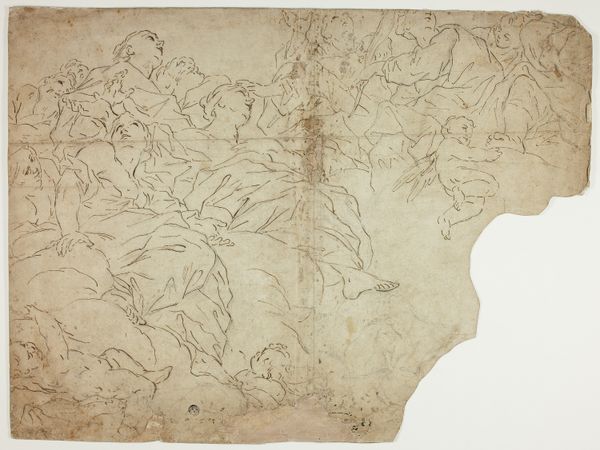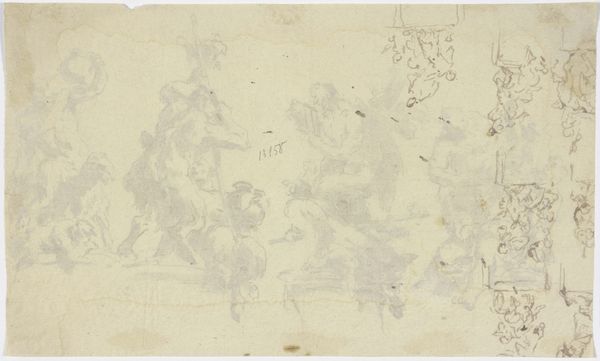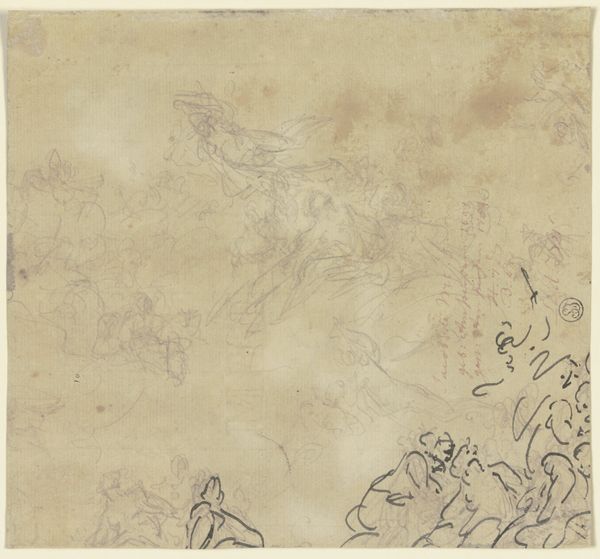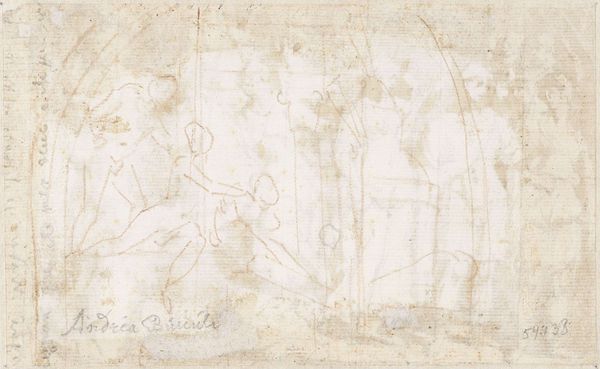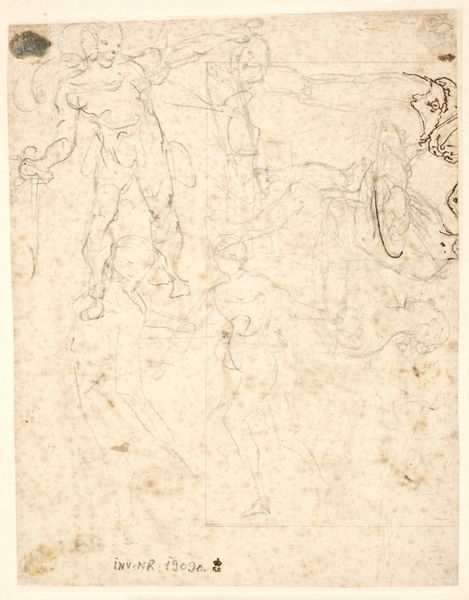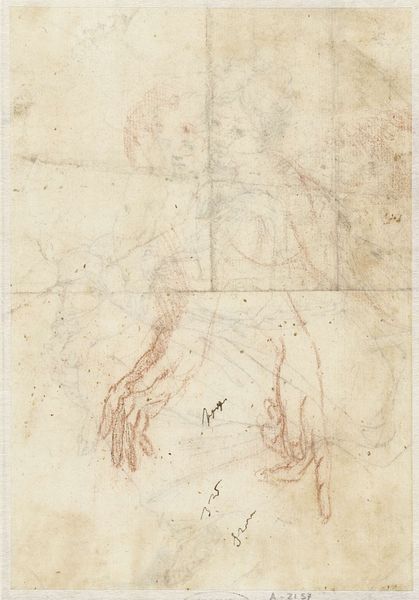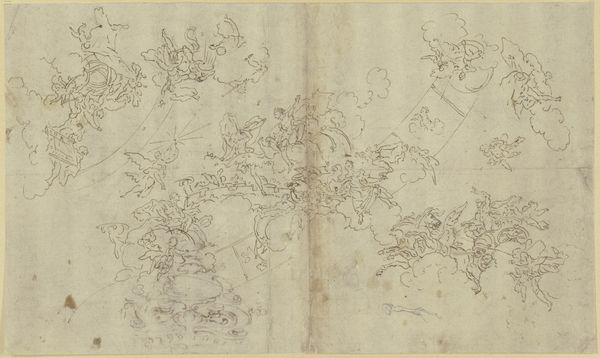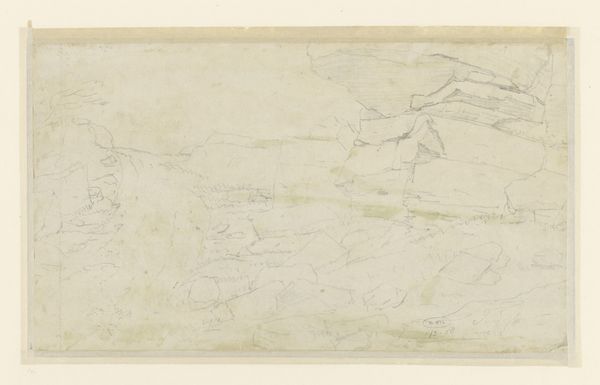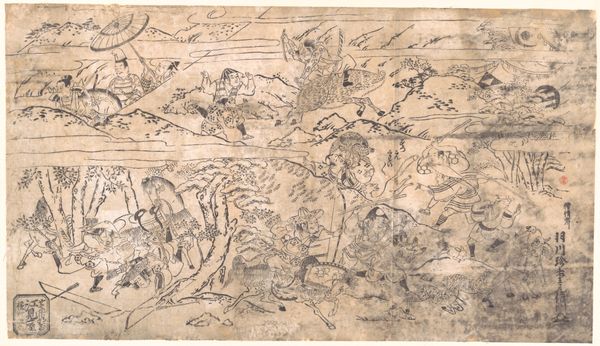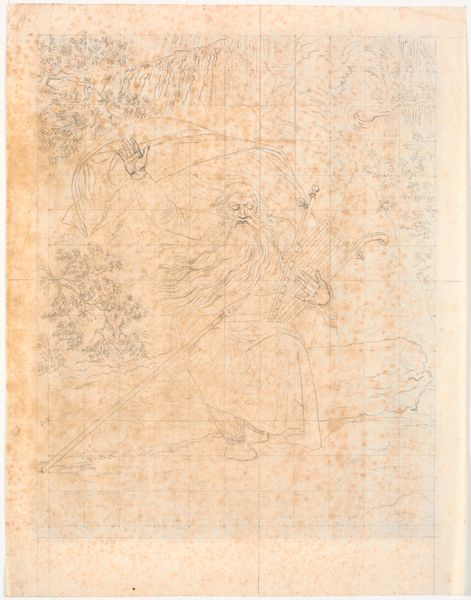
drawing, paper, charcoal
#
drawing
#
narrative-art
#
figuration
#
paper
#
11_renaissance
#
charcoal
#
italian-renaissance
Dimensions: height 280 mm, width 196 mm
Copyright: Rijks Museum: Open Domain
Editor: Here we have "Man en drie andere figuurtjes" or "Man and three other figures", a drawing from between 1550 and 1620 by Paolo Veronese. It's done with charcoal on paper and resides here at the Rijksmuseum. The initial impression is, well, a bit cryptic. What story, if any, do you see being told? Curator: I see not so much a story, as a constellation of symbols, floating in the collective consciousness of the Renaissance. Look at the central figure. He has the hallmarks of a prophet or sage—the flowing beard, the robes. Notice the gesture of his hand. Is it benediction? Admonishment? Perhaps both? What resonates when you think of that posture? Editor: I immediately thought of Moses. You know, descending from Mount Sinai. That authority figure feels inherent to the composition. But the other figures seem…disconnected? Curator: Ah, there's the beauty! Disconnected, perhaps, on a narrative level. But consider them as aspects of the self, or perhaps temptations, swirling around this central figure. Observe how they seem almost weightless, ethereal. They represent a challenge to this man's central authority. How might this fragmented presentation speak to period anxieties about faith, humanity, or power? Editor: So the figures are less characters and more like symbols in a drama of the mind? Interesting… and could that mean there’s ambiguity baked in, too? Curator: Precisely. And the incomplete nature of the drawing—the sketchiness—only reinforces this sense of in-progress thought. A potent image, even centuries later, capturing inner conflicts. Editor: I was caught up in trying to discern the "story", but seeing the work as symbolic fragments opens a new level. I appreciate the fresh perspective! Curator: And I the reminder to see how deeply ingrained certain archetypes remain within us, echoed and reshaped across generations.
Comments
No comments
Be the first to comment and join the conversation on the ultimate creative platform.
